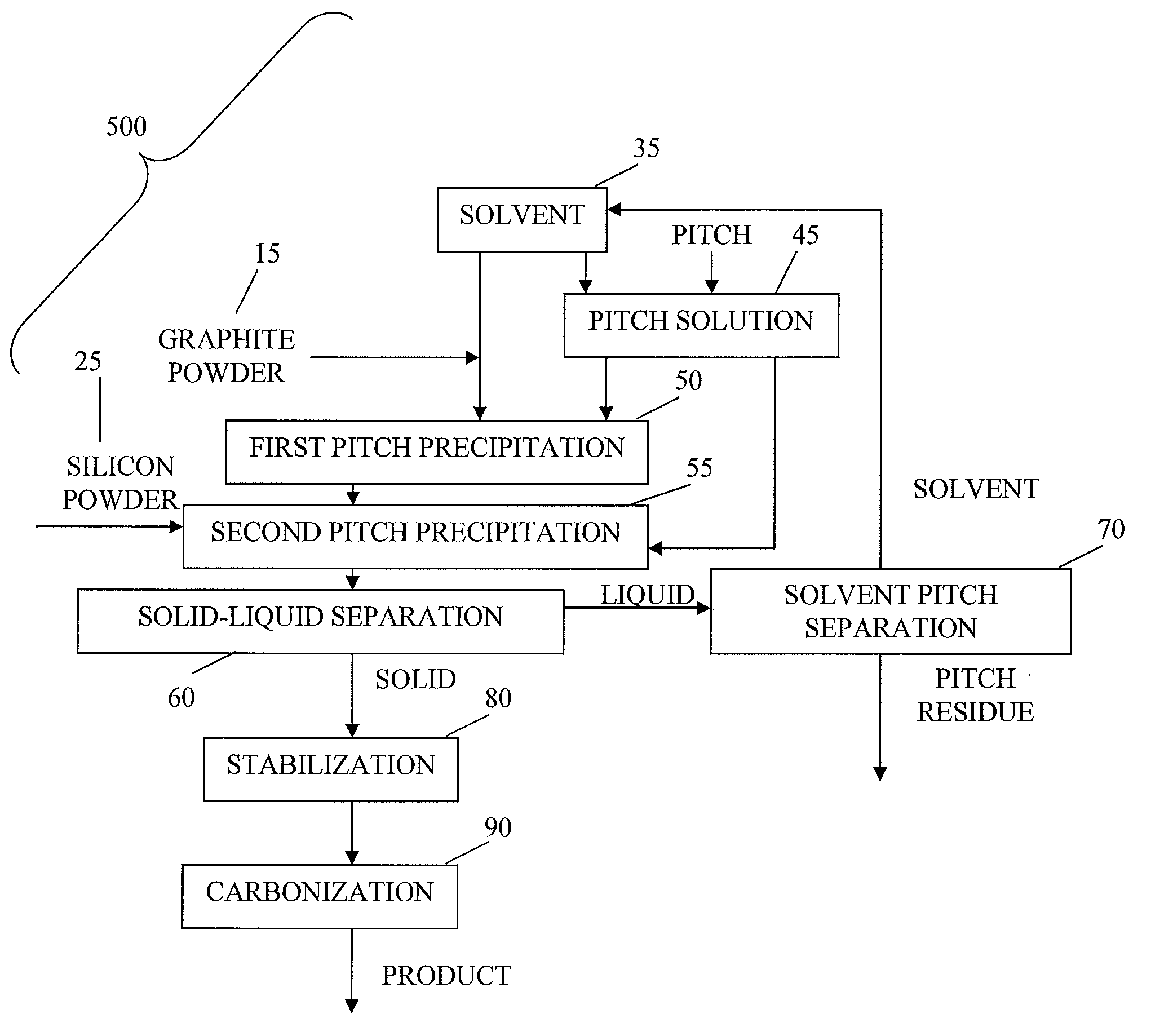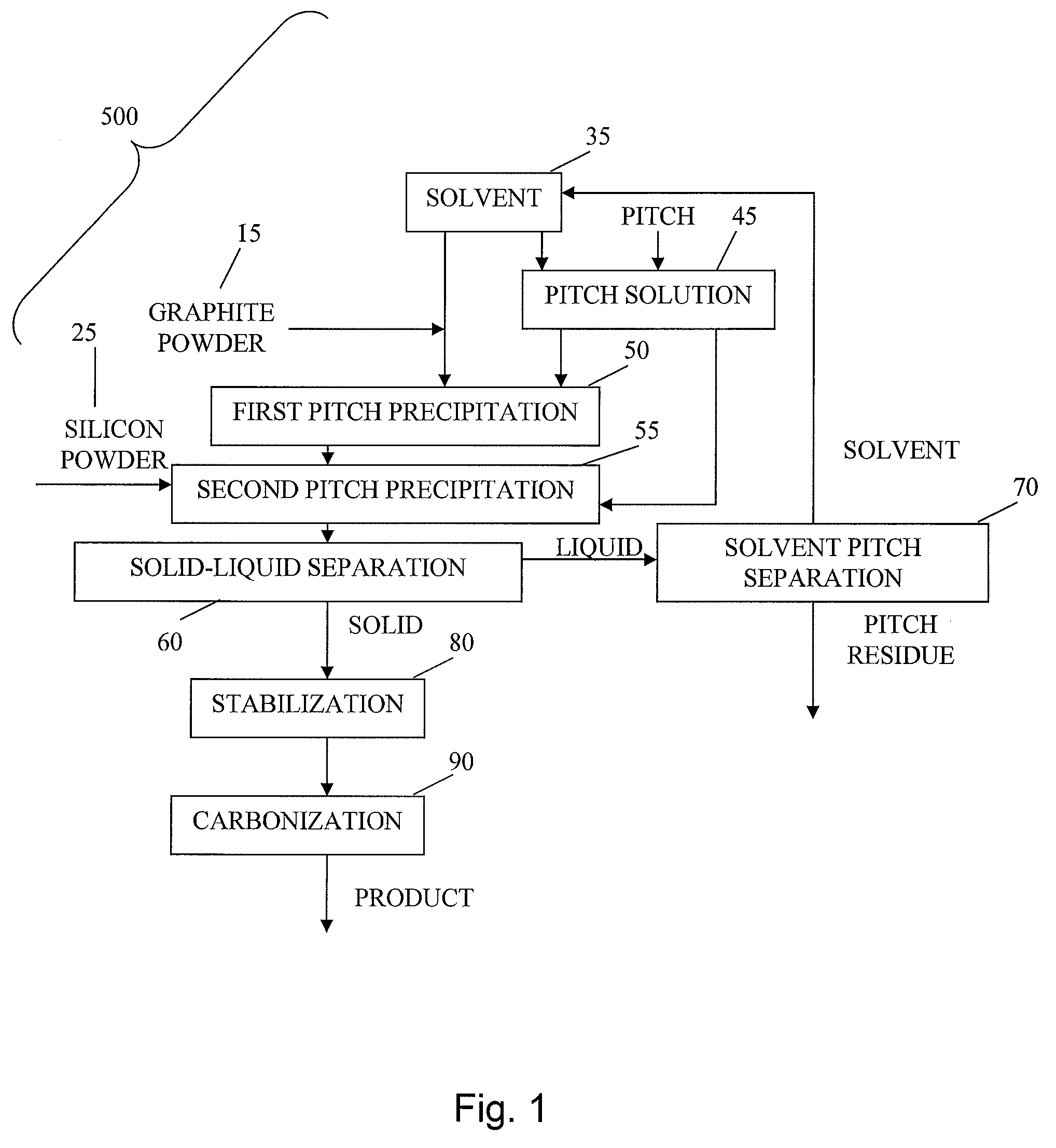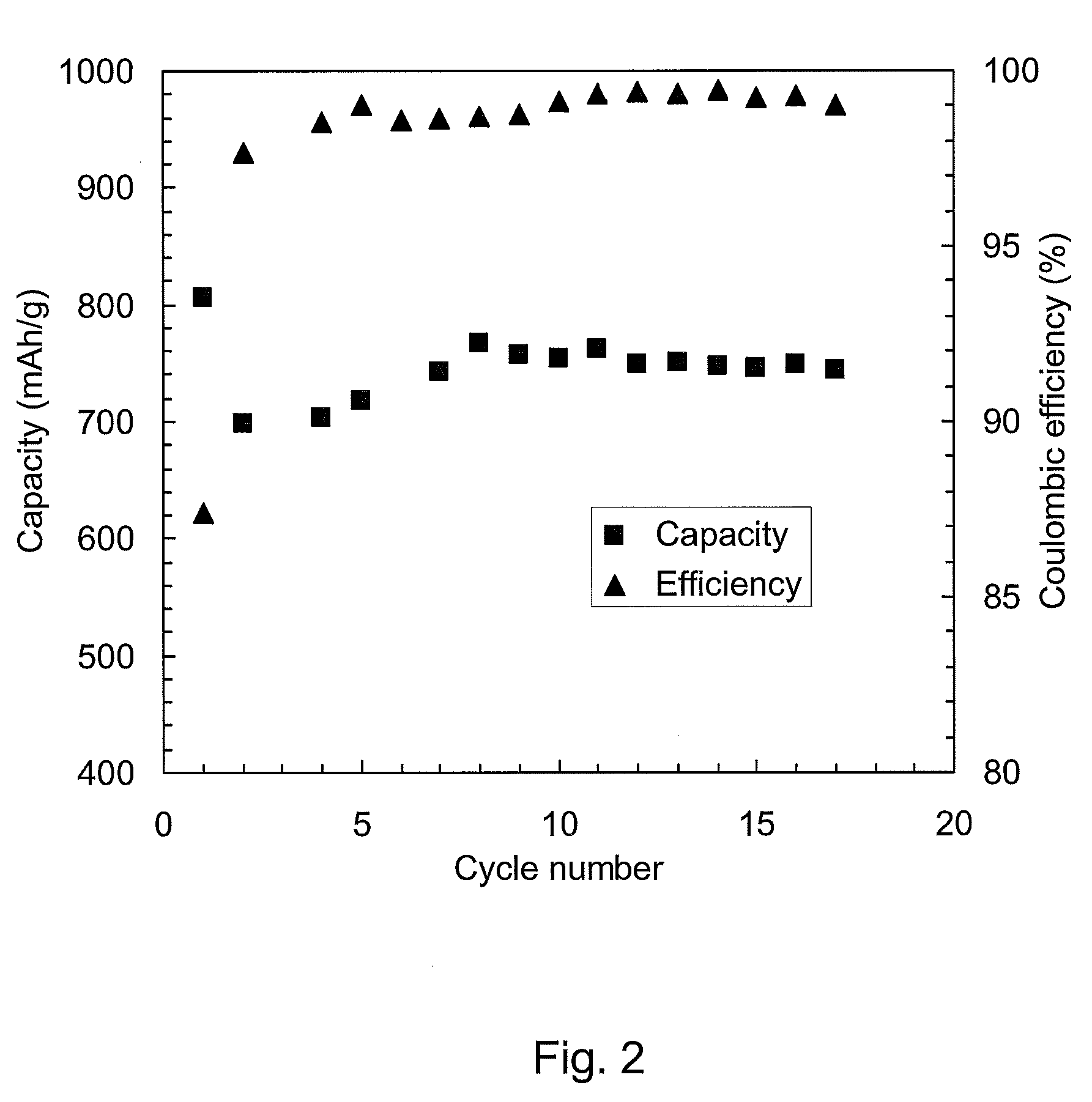Methods of preparing composite carbon-graphite-silicon particles and using same
a technology of graphite and carbon dioxide, which is applied in the direction of cell components, electrochemical generators, impregnation manufacturing, etc., can solve the problems of inability to use plain silicon particle powders as lithium ion batteries, inability to achieve the effect of combining silicon and graphite, and limited usefulness of prior attempts to combine silicon and graphi
- Summary
- Abstract
- Description
- Claims
- Application Information
AI Technical Summary
Benefits of technology
Problems solved by technology
Method used
Image
Examples
examples
[0036]While embodiments have been generally described, the following examples demonstrate particular embodiments in practice and advantages thereof. The examples are given by way of illustration only and are not intended to limit the specification or the claims in any manner. The following illustrates exemplary details as well as characteristics of such prepared composite particle powders as the anode material for lithium ion batteries.
[0037]A liquid suspension mixture was prepared by dispersing 8 grams of a graphite powder (average particle size of 8 μm) in 172 grams of xylene to form composition A in a sealed stainless steel vessel and heated to 140° C. while the mixture was continuously agitated. Further, 50 grams of a petroleum pitch (Conoco C70) was dissolved in 50 grams of xylene completely to form composition B, which was heated to 90° C. Then, 15 grams of the composition B was poured into the composition A while the mixture was agitated. The mixture was heated to 145° C. and...
PUM
| Property | Measurement | Unit |
|---|---|---|
| particle size | aaaaa | aaaaa |
| temperature | aaaaa | aaaaa |
| temperature | aaaaa | aaaaa |
Abstract
Description
Claims
Application Information
 Login to View More
Login to View More - R&D
- Intellectual Property
- Life Sciences
- Materials
- Tech Scout
- Unparalleled Data Quality
- Higher Quality Content
- 60% Fewer Hallucinations
Browse by: Latest US Patents, China's latest patents, Technical Efficacy Thesaurus, Application Domain, Technology Topic, Popular Technical Reports.
© 2025 PatSnap. All rights reserved.Legal|Privacy policy|Modern Slavery Act Transparency Statement|Sitemap|About US| Contact US: help@patsnap.com



